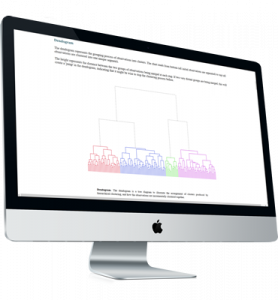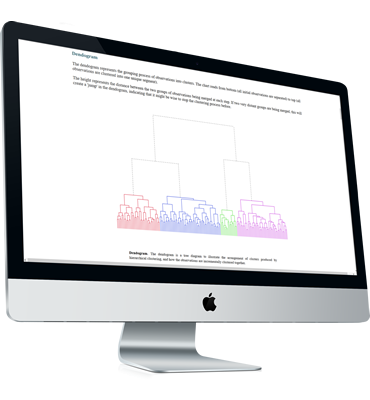
Segmentation
Segmentation helps firms to segment customers in a market. Enginius classifies customers into homogeneous groups such that each segment shares enough characteristics in common to make it viable for the firm to design specific offerings or products for selected segments. Enginius can segment customers based on past behavior, responses to surveys, etc., to identify groups of customers with specific needs, profiles or preferences.
What you put in...
- Customers’ importance ratings for each measure of value for offerings in a product class
- Customer descriptors (demographic or firmographic variables)
What you get out...
- Number, size, and profile of needs-based market segments
- Identification of factors that differentiate segments, both in terms of needs and descriptors
- Classification tool to allocate any potential customer to a segment based on customer descriptors
Key features
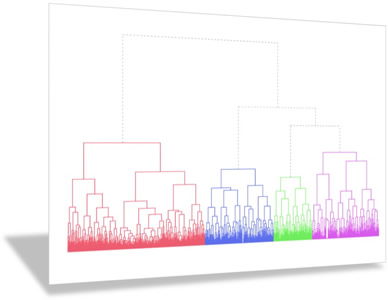
Powerful visualization
The segmentation model has many features to help you better visualize your data, such as colorized dendrograms, screeplots, visual segment description, segmentation space, etc.
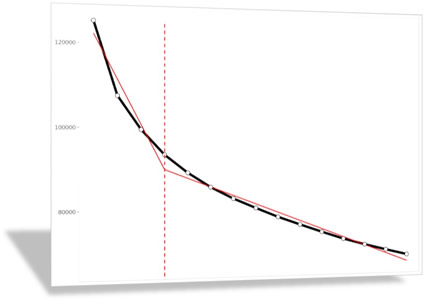
Automatic segment selection
Selecting the right number of segments to summarize your data is as much an art as it is a science: it needs to be managerially relevant; it ideally should lead to targetable segments with clear discriminating descriptors; and the segment solution needs to be statistically sound. As a first step, Enginius can analyze the dendrogram and suggest a segment solution automatically.
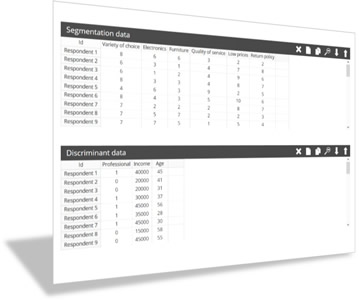
Built-in data transformation
Segmentation data can be skewed, scattered, or collected using different scales. Enginius allows you to standardize or scale the data automatically using various techniques, such as standardization (if the data has been collected on different scales), normalization (if the data is skewed), or factorization (to pre-remove noise from the data).
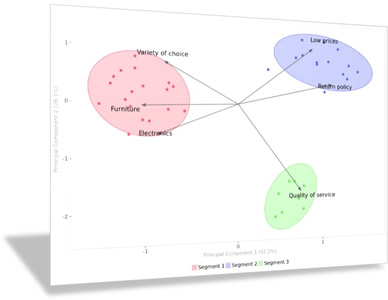
Segmentation space
Using the same visualization tools as in positioning analysis, Enginius displays the segmentation space graphically, allowing you to visualize which segmentation variables tend to move hand in hand, which tends to move in opposite directions, and where segments are positioned in that space.
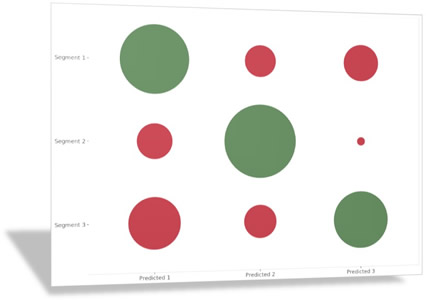
Discriminant and classification analysis
Besides the segmentation data used to segment your customers, you might have descriptors available to describe them, such as age, gender, profession, or media usage. Enginius can try to identify whether these descriptors alone could predict to which segments your target customers belong, and if conclusive, it can apply that discriminant model to classify a new list of contacts into their most likely segments, only based on their available descriptors. And if your descriptors are not numeric (e.g., “male”, “female”), don’t worry, you don’t need to transform them into 0’s and 1’s. Enginius will transform your data automatically into an acceptable format.
About segmentation
Segmentation/Targeting is an analytic technique that helps firms to segment customers in a market.
Segmentation is the process of classifying customers into homogenous groups (segments) such that each group of customers shares enough characteristics in common to make it viable for the firm to design specific offerings or products for selected segments. The application finds customer segments using needs-based variables called basis variables. Cluster analysis helps firms to:
- Better understand their customers.
- Identify different segments in a market.
- Choose attractive customer segments for targeting its marketing programs.


